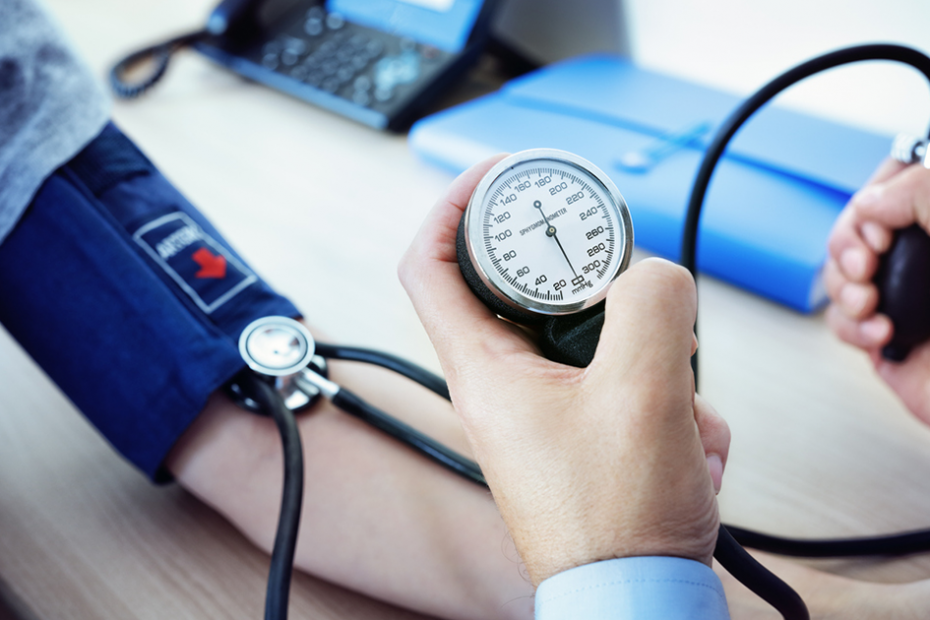The rise of non-communicable diseases is one of the biggest burdens the healthcare sector of the 21st century has to face. Non-communicable diseases are those that aren’t transmitted from person to person, and are rather manifested in the context of a poor lifestyle such as a bad diet, obesity, and lack of exercise.
One such diseases that has claimed a lot of lives and caused serious morbidity is hypertension. Hypertension is also known as at the silent killer, because it manifests insidiously and cause lethal complications if not controlled well.
What Is Hypertension?
Hypertension is a medical term to define increased blood pressure. The blood pressure of an average adult is maintained below 120mmHg (systolic) and 80mmHg (diastolic). Hypertension is diagnosed when two readings taken in two different occasions record a systolic pressure higher than 140mmHg and a diastolic pressure higher than 90mmHg.
Primary Hypertension And Its Risk Factors
There are many causes of hypertension, however, the main focus of this article is on primary hypertension. Primary hypertension or idiopathic hypertension has no identifiable cause. The other category is secondary hypertension that develops due to secondary causes.
Although primary hypertension has no defined cause, it does have recognised risk factors. Risk factors predispose a certain individual to a higher chance of developing hypertension.
- Modifiable Risk Factors – Factors that can be changed, and if changed may reduce the risk. The main focus of this article is to focus on these factors and show how they could prevent the occurrence and reduce the severity of hypertension.
- Cigarrette smoking
- Diabetes Mellitus
- Dyslipidemia/ Hypercholesterolemia
- Overweight/ Obesity
- Physical inactivity/ low fitness
- Unhealthy Diet
- Psychosocial stress
- Non-Modifiable Risk Factors – Factors that are difficult to change
- Family history
- Increased age
- Low socioeconomic/ educational status
- Male sex
Controlling The Risk Factors
Almost every physician you consult is going to give you the standard lecture on controlling your diet, exercising, reducing alcohol intake, and maintaining an ideal weight.
However, most patients fail to follow these instructions, mainly because they lack understanding of how important it is manage these risk factors.
The following section focuses on how effective each of these risk factors are in controlling hypertension.
- Losing weight – How much weight should you lose? And how much will that help me?
The recommended weight goal is to maintain weight within the ideal Body Mass Index (BMI) range. The BMI is calculated by considering the height and weight of the individual.
For every 1Kg loss in body weight blood pressure drops by 1mmHg, upto a maximum drop of 5mmHg in a hypertensive patient.
For someone who has a systolic blood pressure of 144mmHg, a 5kg weight loss can reduce the blood pressure down to 139mmHg.
- Healthy Diet – What Should I Eat? And how much will that help me?
Consuming a healthy diet is one of the most important factors in managing hypertension. Medical professionals recommend what is known as a DASH diet. Dietary Approaches to Stop Hypertension (DASH) emphasises on the consumption of foods that are lower in Sodium as well as rich in Potassium, Magnesium, and Calcium – which are nutrients that lower blood pressure.
The DASH diet encourages the consumption of fruits, vegetables, whole grains, and low-fat dairy products, with reduced content of saturated and total fat. More details on the DASH diet is given here.
It goes without saying the DASH diet does not recommend candy, cookies, salt, and sodas.
A healthy diet as such can reduce the blood pressure down to a shocking 11mmHg!!! This is the biggest change any single risk factor can make in managing hypertension.
- Reducing Dietary Sodium Intake – How Much Salt Can I Use In A Day And What Difference Would That Make?
Sodium is an element commonly found in nature. It is also one of the main electrolytes inside the blood vessels. Presence of a high concentration of sodium leads to water retention in blood vessels. This ultimately leads to a high blood pressure.
Sodium is commonly consumed as table salt in its chloride form – NaCl. It is used in cooking, and most of us aren’t used to eating food without salt in it. And That is not what we expect either. Salt can be taken, but in moderation.
The optimum daily goal of sodium is to maintain intake below 1500mg/day, but aim for at least below 1000mg/ day in most adults.
Sodium Restriction could reduce blood pressure upto 6mmHg.
- Increasing Potassium Intake – How Much Potassium Should I Take? And What Difference Would That Make?
Aim for 3500-5000mg of intake by consuming a diet rich in Potassium. This could improve blood pressure upto 5mmHg.
- Physical Activity – What Exercises Should I Do? And How Much Would That Help Me?
It is common knowledge that exercising improves blood pressure. But how much do you have to work out to achieve what goal?
| Activty | Dose | Impact on Systolic BP |
| Aerobic Exercise | 90-150 mins/ week | 5-8mmHg |
| Dynamic Resistance (Gym workouts) | 90-150 mins/ week 6 exercises – 3 sets per exercise, 10 repetitions per set | 4 mmHg |
Each of these risk factors, when managed, has a positive impact on other factors. For example – exercising and improving diet reduces obesity.
Almost everyone reading this knows at least one person suffering from hypertension. Hypertension leads to serious complications in the long term such as stroke, kidney failure, myocardial infarction. Due to the lack of symptoms, most patients do not take treatment very seriously.
The aim of this article is to promote a healthy lifestyle by providing detailed information on the impact each risk factor has on controlling blood pressure.
Share this with those you know who might benefit from it.
More information on managing hypertension will be uploaded soon.
